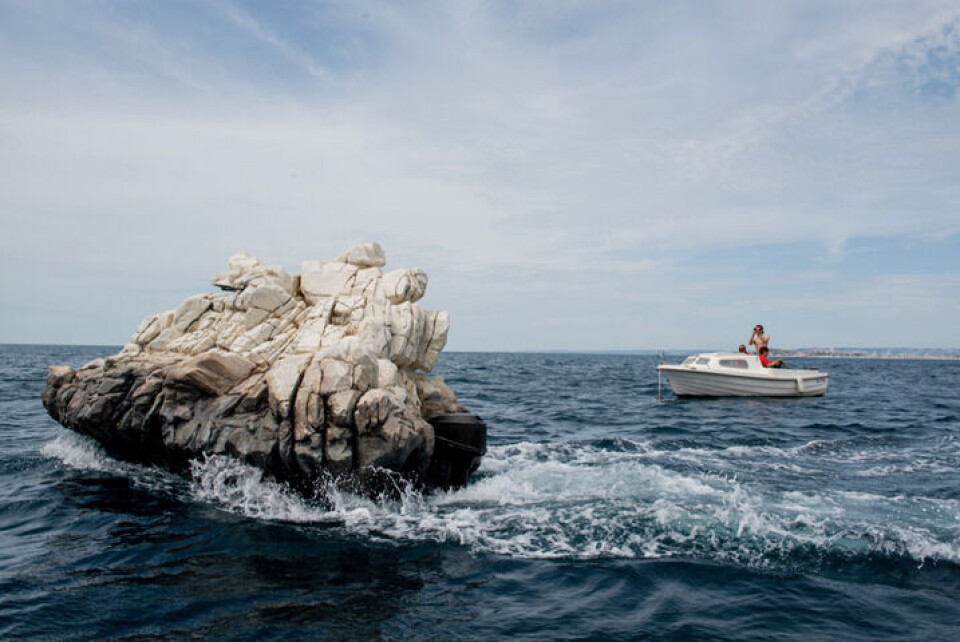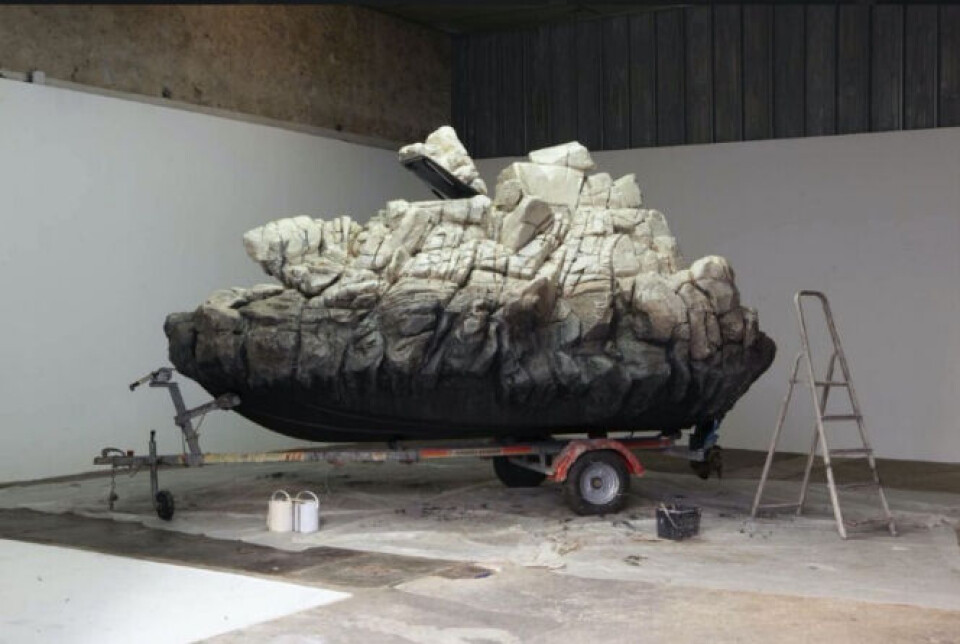-
Duck Cold! Four French phrases to use when it is freezing outside
We remind you of French expressions to use to describe the drop in temperature
-
When and why do we say le moral dans les chaussettes?
We explore this useful expression that describes low spirits
-
The origins and meaning of tirer les marrons du feu
As Christmas approaches, we look at a phrase to describe someone who takes advantage of a situation
The ‘moving rock’ off coast of Marseille is actually a boat
‘I wanted to celebrate the Calanques, make something fun while adding to the natural scenery,’ artist Julien Berthier told The Connexion.

French artist Julien Berthier has created a boat entirely disguised as a floating rock, which has taken on a life of its own.
This boat camouflages as a rock and blends into Marseille’s coastline.
— Tech Burrito (@TechBurritoUno) February 1, 2022
Artist Julien Berthier created L’invisible by combining a shabby boat with an epoxy resin top.
via @gigadgets_ pic.twitter.com/0okPmp8K9T
The 4.3-metre-high piece, called ‘L’Invisible’, was made from epoxy resin and fitted to a second-hand boat bought on Le Bon Coin.
It blends almost seamlessly with its surroundings around Marseille’s Calanques rock formations, until you realise that it is speeding through the waves, and overtaking you. The helmsman’s face peeking out from the hatch at the top also gives the game away!
Commissioned by fellow artist Thomas Mailaender to produce an artwork for the Tuba Club, a former scuba diving centre turned hotel in Les Goudes, Marseille, Julien Berthier did not want to create something too conspicuous.

“I wanted to celebrate the Calanques, make something fun while adding to the natural scenery.
“How can you add to the Calanques, which are arid and dry, but very beautiful too?
“So the bateau rocher is kind of like enhanced art or even land art, except that the bateau rocher is completely fake.
“But once it was finished, people saw other things in it, camouflage and military uses. When it’s anchored it floats up and down, catching the eye, so although it’s called ‘The Invisible’, it’s actually very visible.
“It's quite burlesque, slapstick, almost like a comedy act. It’s taken on its own life.”
Julien Berthier studied at the École nationale supérieure des Beaux-Arts in Paris before embarking on a career whose creations have since featured in countless exhibitions across Europe.
It is not the first time he’s been inspired by boats; his 2010 work, ‘Love, Love,’ is a boat designed to look as if it was sinking into the water at 45 degrees.
This boat, created in 2010 by French artist Julien Berthier, was made from an abandoned yacht and was designed at a 45 degree angle to look like it is perpetually sinking. ⛵️#FactManiac pic.twitter.com/dAPjEhztFz
— Fact Maniac (@factmaniac) September 4, 2018
Julien Berthier says he spent many holidays by the sea as a child: “I would go to visit my grandmother every summer in the south and I did a lot of diving not far from Marseille, near the Calanques. I enjoy how the old people of the town, the locals, say to me: ‘Oh! I never saw your rock, even though I know this place like the back of my hand!’.”
“I feel that my work is to look and see what humans have made. In some ways the two pillars of consumerism are shipping containers and computers.
“I look at that, and I look at objects in cities, where there are so many objects blocking your way. I’m also interested in the overlap between the artificial and the natural worlds.
“I’ve exhibited in galleries but now I prefer making pieces for public spaces, so they integrate into real life. I like site-specific art which makes people think about stuff. I also like it when there's no label, no indication that this is a formal artwork by this or that artist.
“I like ambiguity; is it art or not?”

The bateau rocher took around six weeks to make, during Covid. “I made it in various workshops in Marseille. It was vital for it to be hyper-realist, and that took a long time to get it right. It also needed to be strong enough to be able to get inside it.”
The structure is very light and does not affect the way the boat handles on the water.
“It doesn’t have all the correct maritime papers however. It also doesn’t have the right lights so it’s not really legal to sail it on the sea,” Mr Berthier explained.
“It has been in storage over the winter, and although people are already looking for the ‘Invisible’ in the Calanques, it truly has become invisible. It isn’t there!”
When it was first suggested that he take the boat to Switzerland, Mr Berthier did not like the idea, but he has now warmed to the project.
“It will be in Vevey, on the shores of Lake Geneva this September as part of the Festival images from September 3 to 25, 2022.
“The Invisible can voyage in space and time, it has become a personality, it has an independent life.”
You can see more of Mr Berthier’s work on his website.
Related articles
Connexion readers may have solved 1960s holiday drawing mystery
Simon Beck: The artist reveals the secrets of his snowshoe drawings
Meet the artist behind France’s new Napoleon commemorative sculpture
























